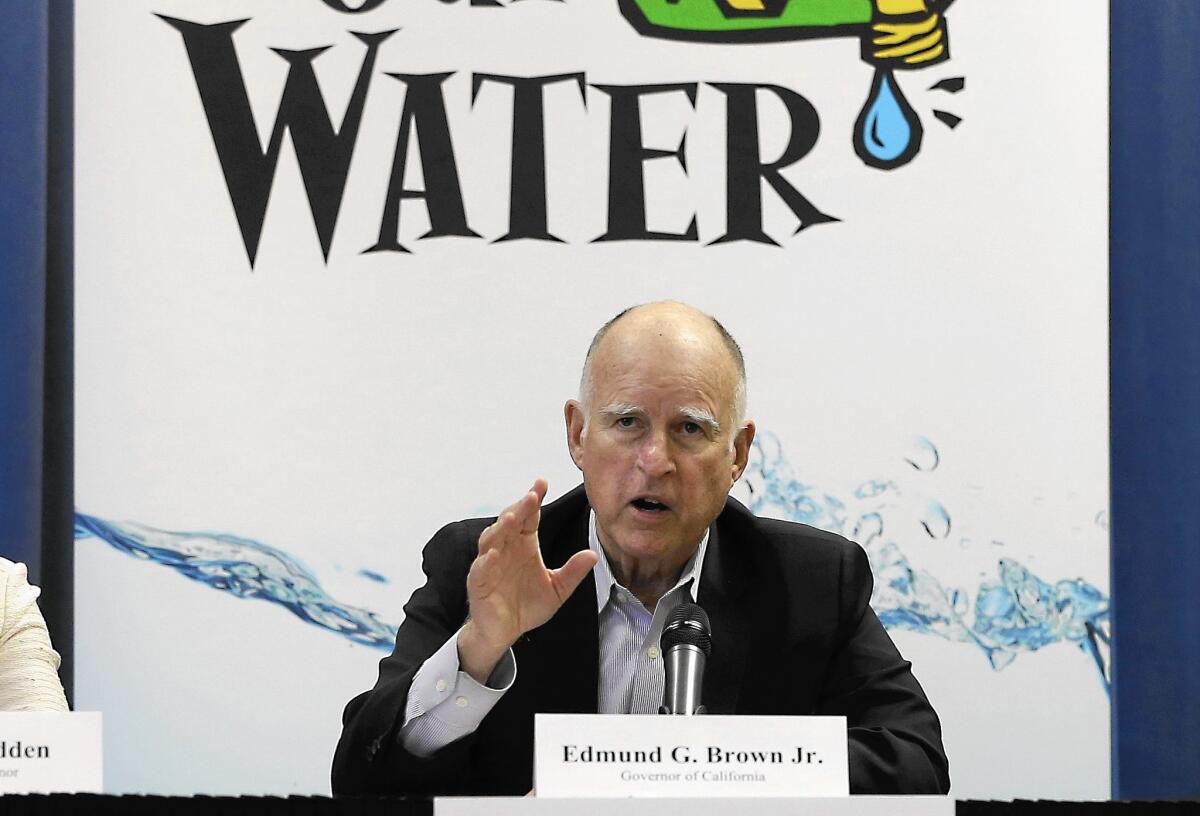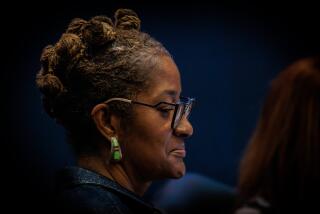L.A. County drought plan decried by residents facing big water bills

- Share via
Andrew Chadd was startled when he opened the notice from the Los Angeles County agency that supplies water to his neighborhood in the unincorporated community of Littlerock.
To conserve during the statewide drought, the letter said, Antelope Valley water customers would have to collectively reduce consumption 32%. But Chadd’s family of seven would be required to cut consumption 70% or potentially see their bill triple.
“We were trying to figure out … how we can do this and who’s going to tell the kids that they can only use the bathroom on Monday and Friday?” he told county officials at a meeting last week.
Local water agencies around California, under orders by the state to make deep cuts to consumption, have come up with strategies that run the gamut. They include giving cash for ripping out lawns, fining residents who over-water their plants or simply asking customers to decrease their use. But Los Angeles County is considering an unusual conservation plan that is drawing an outcry from residents whose water bills could skyrocket.
Although the state wants to reduce overall urban water use 25%, the county is required to cut consumption 32% in the Antelope Valley and 36% in Malibu and Topanga — among the highest mandated reductions in the state.
Under the proposed plan, which county supervisors are scheduled to vote on Tuesday, the county water districts would calculate a single monthly target for most residential users by deducting the percentage reduction from average usage for the area in 2013. Customers who exceed the target would pay double or triple the base rates.
Residents like Chadd, with larger than average families or properties, say the formula is unfair because it sets the same target for everyone regardless of a customer’s current water use or the number of people in the household.
Gary Hildebrand, deputy director of the county’s public works department, which runs the county Waterworks Districts, said there would be an appeal process to address households with special circumstances.
But county officials argue that their approach rewards people who are already conserving and gives heavier users the choice to cut back or pay higher rates. The county has implemented irrigation restrictions and offers incentives to residents who remove their lawns or buy water-saving appliances, Hildebrand said.
“Water’s becoming more scarce in the drought, and when you have a scarce commodity, it’s going to become more costly,” he said.
With hundreds of water suppliers around the state developing different plans to meet their conservation goals, experts said there is no standard approach.
Some agencies, including the Los Angeles Department of Water and Power, have limited outdoor watering and set fines for violators, but have not put in place the type of penalties for individual customers that the county is contemplating.
Other agencies that have drought surcharges structured them differently than what the county is proposing. The city of Glendale imposes a flat surcharge on each hundred cubic feet of water sold. The Quartz Hill Water District, which serves about 20,300 customers in the Antelope Valley, is requiring customers to cut their use 36% or face penalties. But the target usage amounts are based on each customer’s past use, not on an average across the district.
“It wouldn’t be fair to ask one customer to cut back 10% and one customer to cut back 50%,” said district spokeswoman Debi Pizzo.
She said the district also takes into account factors such as the number of people in a household and the lot size to determine a conservation level for each customer, and wouldn’t impose the extra charges on those who are already below that level.
Stephanie Pincetl, director of the California Center for Sustainable Communities at UCLA, said she had not heard of another agency taking an approach like the one proposed by the county.
“I think it’s a first step and we’ll see how it works,” she said. “It’s worth giving it a try and then adjusting afterwards.”
Follow @sewella for more news about L.A. County government
More to Read
Sign up for Essential California
The most important California stories and recommendations in your inbox every morning.
You may occasionally receive promotional content from the Los Angeles Times.











